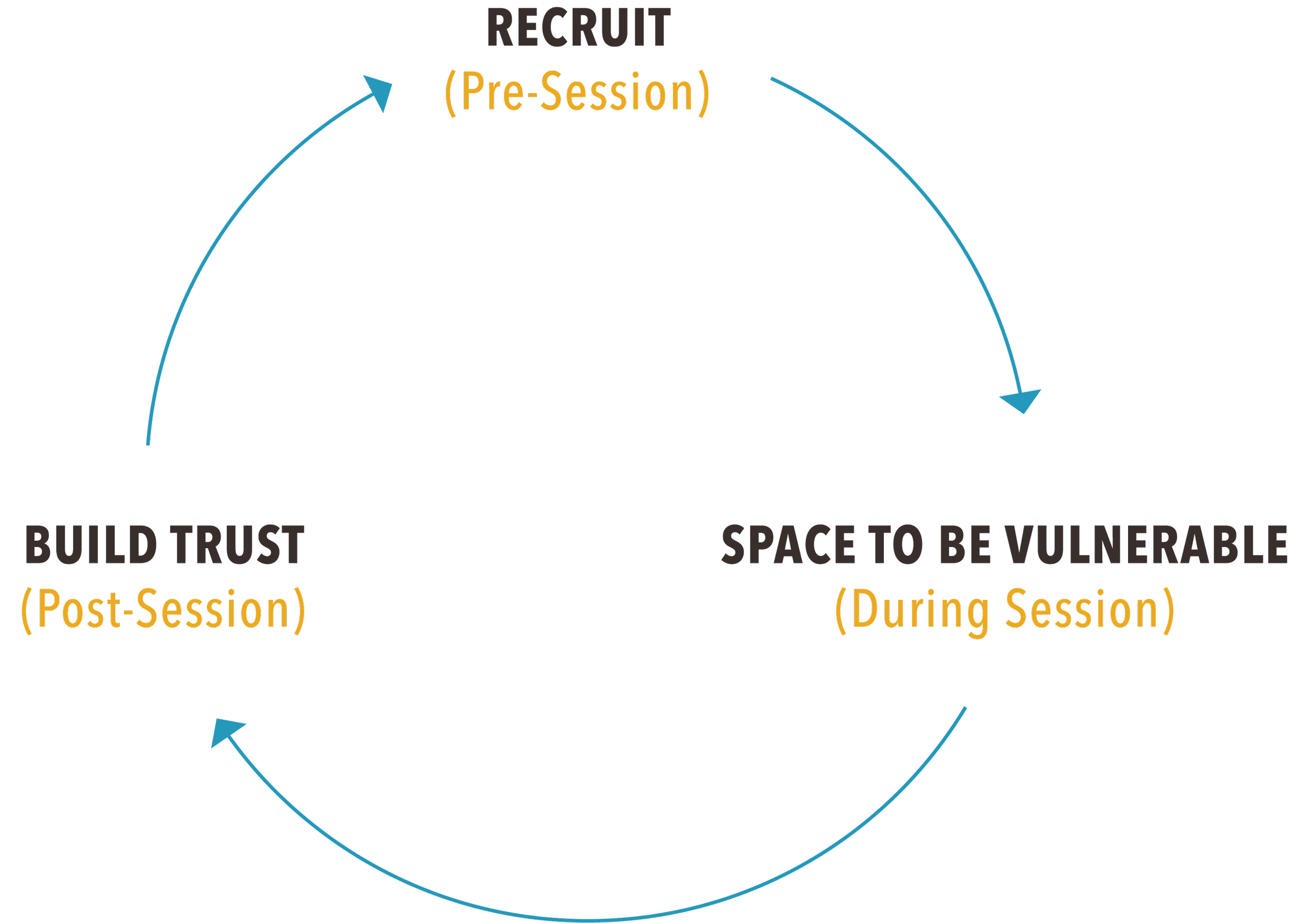Over the last four years at OSB, I’ve been lucky enough to host many co-creation sessions and workshops. Often the focus of these has been on topics that I had little personal relation to, issues like child care or public health best practices. The good news is that I quickly learned being a subject matter expert is often a hindrance in facilitating these conversations. Approaching from an outside perspective allows you to lead with curiosity and honestly learn from participants.
From these sessions, I identified a few best practices to consider whenever facilitating a group co-creation discussion – whether it’s just to listen and learn, or to co-develop some solution with participants.
Key Idea #1: Recruit
It’s easy to stay in bubbles of folks you know and come back to them. While sustained relationships with stakeholders are great – it’s a sign of trust – it also means that after a while we’re likely hearing the same things over and over again. Our knowledge and perspectives are likely not being challenged.
So how do we branch out beyond the known? Unfortunately, there is no silver bullet for recruiting from new pools of people easily. It takes work. It takes a dedicated effort. It takes building new connections and getting uncomfortable. A good starting point is tasking existing stakeholders in your ecosystem who they think we’re forgetting. Ask them to invite others, and from there you may be able to keep branching out.
Constantly explore new avenues for promoting sessions. Examine your own team for bias. Build a diverse team made up of different experiences, identities, and ideas. This foundation is crucial for impactful work.
Key Idea #2: Create a Space for Vulnerability
Even though folks have opted in, they may still be shy or simply not fully know what to say once in the session. We’ve developed a tiered system to allow folks the space to get comfortable. Some people shine in different settings, so offering multiple ways to engage within a session will allow optimal idea exchange.
Personal reflection - Give participants a prompt to orient them to the focus of the session. For example: “Identify a time when you experienced X”. Give them a few minutes to think alone.
Partnered sharing - Ideally this is a one-on-one, where partners share their experience they just thought of and make basic introductions. People can ask questions and get comfortable sharing in a safe space.
Small group discussion - Some folks may not be comfortable sharing once it’s a full breakout room’s worth of participants, but some might want to connect over their experience. Usually, just one or two people sharing starts a conversation where others can add on or draw parallels. As facilitators, you may need to prompt people to get the ball rolling or steer everyone back on track. Remember that this should be a safe space, but it shouldn’t become a space for people to complain about experiences.
Full group debrief - Bring together all the groups and share common themes that you saw and heard. Facilitators can be the high-level connectors in this conversation and identify the main takeaways. This is going to really help you when you need to synthesize results later.
Key Idea #3: Build Trust
This actually helps back to idea #1 as building trust encourages more sustained engagement and good word of mouth – it creates a cycle! But once you’ve had people be vulnerable and share their ideas or experiences, you can’t leave them hanging. How are you going to use their insights and stories? You need to share something tangible to thank them. We recommend a stipend for people’s time as well as a resource like a list of organizations that can support them related to the topic of the session. Then you need to send an update. It’s demoralizing for people to feel that their perspectives aren’t actually being used to make things better for others down the road. When action is happening later, share that back out with participants. It’s rewarding to see an impact!
Curious to learn more about how to facilitate co-creation or listening sessions or how these could benefit your organization? Talk to us!
By Sophie Becker, Design Innovation Strategist






